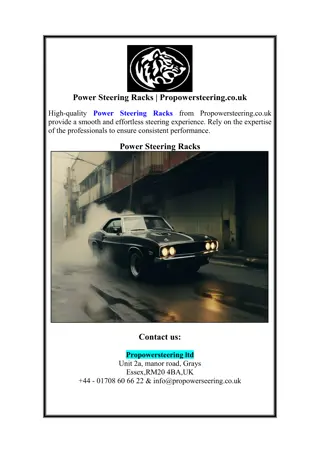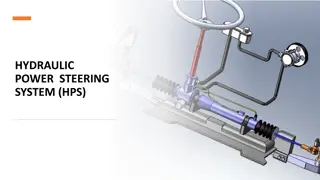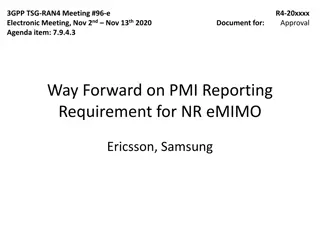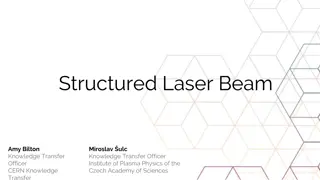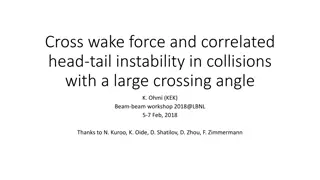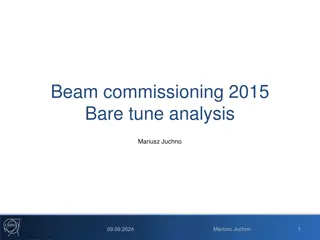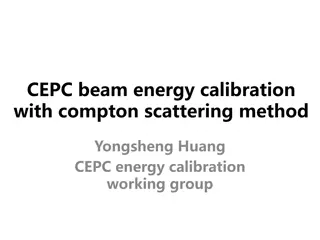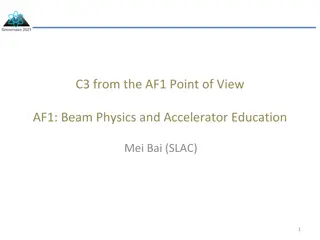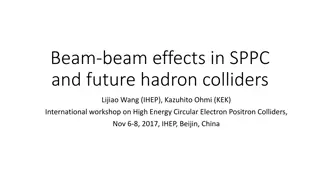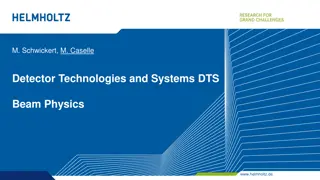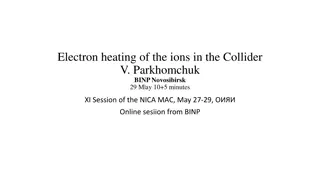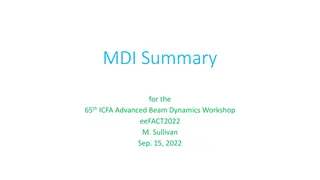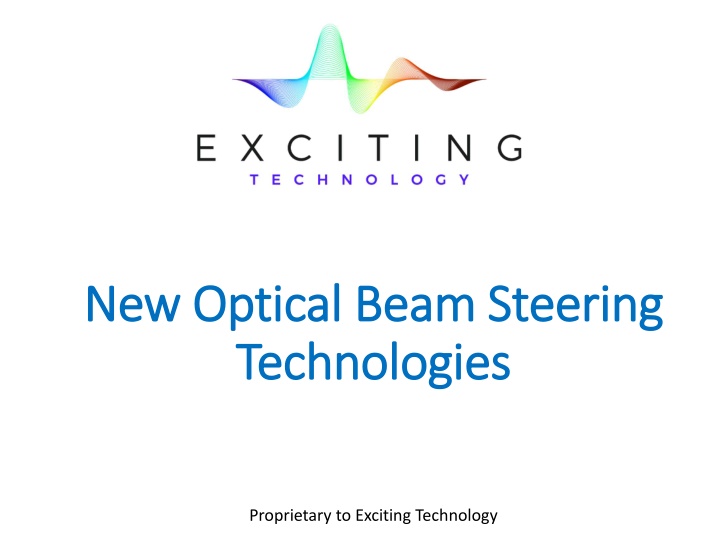
Revolutionary Optical Beam Steering Technologies
Explore cutting-edge optical beam steering technologies that offer proprietary advancements, from mechanical to non-mechanical approaches, including decenter lens steering and major design improvements for enhanced performance and larger angle steering capabilities. These breakthroughs pave the way for significant advancements in optical beam steering applications.
Download Presentation

Please find below an Image/Link to download the presentation.
The content on the website is provided AS IS for your information and personal use only. It may not be sold, licensed, or shared on other websites without obtaining consent from the author. If you encounter any issues during the download, it is possible that the publisher has removed the file from their server.
You are allowed to download the files provided on this website for personal or commercial use, subject to the condition that they are used lawfully. All files are the property of their respective owners.
The content on the website is provided AS IS for your information and personal use only. It may not be sold, licensed, or shared on other websites without obtaining consent from the author.
E N D
Presentation Transcript
New Optical Beam Steering New Optical Beam Steering Technologies Technologies Proprietary to Exciting Technology
Two Main Topics Two Main Topics A new Mechanical Approach Uses existing Components, so can be easily built Patent pending Can steer 45 degrees, from an arbitrarily large aperture, > 200 hertz New non-mechanical approaches Will further develop one of them during a phase 2 SBIR 30 degrees 2.5 cm aperture < 5 sec steering time Second Approach 60 degrees, < 20 sec steering time Proprietary to Exciting Technology
Background Background Steering using decentered lenses has been around for years. Below shows 2 lens steering and 3 lens steering Proprietary to Exciting Technology
Significant aspects of Significant aspects of decenter lens based Steering decenter lens based Steering A piezo plate or a pair of piezo plates move a lens A smaller lens creates a larger angle for the same displacement Piezos are limited in the amount of displacement Higher frequency means piezos move a smaller distance Magnification reduces steering angles = 0 M Usually to steer 2 dimensions a single lens is moved in 2 dimensions This limits the total movement Traditionally steer small angles and small apertures Proprietary to Exciting Technology
1 1st st Major Improvements in Major Improvements in Our Design* Our Design* Steer and magnify at the same time Allows larger angle steering with larger aperture Move two lenses, one in azimuth and one in elevation Increases allowed movement by a factor of 10 or even more * Patent pending Proprietary to Exciting Technology
Stage 1 Steering Stage 1 Steering The steerer consists of at least three lenses; two small moving negative lenses and one fixed larger positive lens No focus. Can steer plus of minus 10 degrees Proprietary to Exciting Technology
Stage 2 Stage 2 - - Decenter Lens Decenter Lens Steering with Virtual Beam Steering with Virtual Beam Displacement Displacement The major limitation of decentered lens beam steering is the available motion From Piezo-electric devices, or electro-magnetic motion. This is rapid, but small motion. In this approach we use a version of stage 1 to create larger virtual motion at the field lens. This allows steering to larger angles Proprietary to Exciting Technology
Second Major Breakthrough Second Major Breakthrough ( Stage 1 and 2 Steering) ( Stage 1 and 2 Steering) The steerer consists of at least five lenses, two small moving negative lenses, one fixed positive magnifying lens, one fixed positive field lens, and one fixed positive re-collimator lens Moving negative lens 1 lens 2 lens Moving negative field lens magnifying Final Aperture Fiber collimator lens Can steer to > 50 degrees. Proprietary to Exciting Technology
It is possible to independently It is possible to independently steer more than 1 laser beam steer more than 1 laser beam One beam will be directly down the center of the lens system We can have 6 more around the center beam, each one tilted so the center of their beam system passes through the field lens, but at an angle. The center beam will steer 50 deg. The 6 around center will steer ~ 40 degree around their center line Field lens Proprietary to Exciting Technology
Revolutionary Non Revolutionary Non- - Mechanical Beam Steering Mechanical Beam Steering Proprietary to Exciting Technology
Far Field Pattern Far Field Pattern For 30 degrees steering, and 1,06 um Proprietary to Exciting Technology 11
Near Field for this case Near Field for this case Sawtooth, with steps Proprietary to Exciting Technology 12
Wide Angle beam steering Wide Angle beam steering ( > +, or ( > +, or 60 degrees) 60 degrees) Use a couple Volume Holograms before steering Can use polarization birefringent gratings to steer into each volume hologram Use new, simple to fab, steering after volume holograms Proprietary to Exciting Technology 13
Wide Angle beam steering Wide Angle beam steering ( > +, or ( > +, or 60 degrees) 60 degrees) Can use +10 deg, and -10 degree into VHGs VHGs can Steer another 20 deg, or 30 deg Continuous beam steering using half wave voltage approach Up to plus or minus 20 degrees, without fishtail + or 30 degrees with fishtail 10 degree, PBG, 20 deg VHG, 20 deg half wave =50 degree Conservative. VHG can be large, can use fishtail Can get high efficiency, continuous, steering at + or 60 deg Proprietary to Exciting Technology 14
Active Media Active Media KTN is baseline Working on thin, single crystal, layers Can use ceramics, but need 3x the voltage Looking at MWIR materials as well Investigating Quantum Dots Need to learn more Steers both polarizations Can get > 1 index change. Proprietary to Exciting Technology 15
Summary Summary Have invented a revolutionary > 45 degree mechanical steering approach Arbitrarily large apertures (e.g. 15 cm, 20 cm, 50 cm, or more) 200 Hz Available components. No development required Non- Mechanical 30 to 60 degree steering > 20 Khz No moving parts Available in 24 months at 2.5 cm aperture size. Proprietary to Exciting Technology

